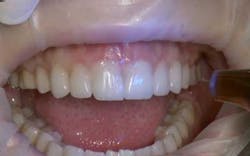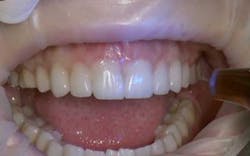Relegating dental sharpening devices to the bottom drawer
By Lynne Slim, RDH, MS“OK, students, today we’re going to learn how to sharpen dental hygiene instruments with a tried and true Arkansas stone.” “Turn to page 535 in your Wilkins text, and I’ll demonstrate the technique using a stationary stone.” Instructor Ginger Vitis, RDH, MS, couldn’t miss the collective groan from her students as they grabbed hold of a Gracey 1/2 curette in their nondominant hand. Remember those days when you had to memorize the internal and external angles for sharpening? I remember memorizing the angle on the outside between the instrument and stone (100 to 110 degrees), but I failed miserably at application chairside. Sometimes I’d succeed in reshaping a dull blade, and sometimes my technique didn’t work. These were frustrating moments, and I grew to resent sharpening. I’d also try some of the sharpening devices, but I honestly never had a favorite. Wouldn’t you be thrilled if your sharpening days were over and you could focus on instrumentation efficiency instead? Dental instrumentation can be much more efficient (and ergonomic) with the appropriate piezoelectric or magnetostrictive ultrasonic unit. A blended approach that incorporates both ultrasonics and manual instrumentation is especially popular with practicing dental hygienists today. Periodontal maintenance patients benefit from meticulous biofilm and calculus removal, yet many clinicians grossly underestimate the time needed to adequately debride patients with moderate to advanced clinical attachment loss.1Most adult patients require more than just a quick “scale and polish” prophy. Periodontal maintenance requires biofilm disruption ... and the more thorough, the better. The quality and ultimate success of periodontal maintenance depends on appropriate instrument selection and adequate time to thoroughly debride around crown margins and roots. Many of today’s dental hygiene clinicians have a lot of hand instruments rattling around their trays, but they don’t use them very often. Most are dull (I know, because I do a lot of temp work) and many are unnecessary. For me, it makes more sense to have a few higher quality hand instruments that NEVER require sharpening, and I happily blend them with my favorite ultrasonic tips. Like hand instruments, ultrasonic tips are customized for each patient. I’m a big fan of American Eagle’s lightweight sharpen-free XP technology hand curettes (see Figure 1), and here’s why. They are treated with a patented nanotechnology process that hardens stainless steel and then encapsulates it. The end result is a diamond-like edge that lasts for many months without sharpening. Personally, I like universal curettes such as the Barnhart 1/2 or 5/6 or 4R/4L that save time and effort. I’m very excited about American Eagle’s Scandette™ with two cutting edges that adapt to mesial and distal surfaces. It has a longer shank (such as the Gracey 11/12) that allows you to combine thin ultrasonic tips with Scandette’s™ working ends to reach complex root anatomy (See Figure 2).
Figure 1
Figure 2When working blind, it’s not possible to reach every area of a root surface, especially when instrumenting root concavities and furcations. Overlapping strokes certainly help and so does a smaller, thinner working end. However, from a time and efficiency point of view, it makes no sense to me to work with half a dozen or more curette designs when sometimes one or two that remain sharp will work just as well. I’ve personally learned a lot over the years from observing and writing about clinicians who use a periodontal endoscope to guide their instrumentation around challenging and sometimes unique root anatomy. These clinicians don’t use a lot of hand instruments, but instead select a few universal instruments with very sharp edges that can be available at a moment’s notice. Since they use a two-handed technique (endoscope explorer in one hand and instrument in another), they’re more focused on performance and durability of hand and ultrasonic instruments. Efficient blended instrumentation requires a dedication to state-of-the-art ultrasonic and hand instrument design. Choose wisely and don’t always select the least expensive option. When it comes to instrument purchases, remember the old adage “you get what you pay for.” In today’s busy dental practices where clinicians are constantly pushed for time, why not eliminate dreaded “sharpening” from the instrumentation equation? Thanks to American Eagle’s XP sharpen-free nanotechnology, those pesky sharpening stones and other devices are collecting dust in somebody’s bottom drawer.
Lynne Slim RDH, MS, is the periodontal therapy columnist for RDH magazine. She is president of Periocdent, LLC, a practice-management firm specializing in coaching dental hygienists to become more proactive in assessing and treating periodontal diseases nonsurgically. Her coaching enables dental hygiene departments to become more profitable through clinical excellence.Reference1. Matsuda SA. Instrumentation of biofilm. Dimensions of Dental Hygiene. February/March 2003; 1(1):26-28, 30.



